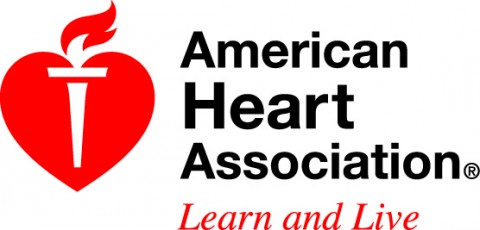American Heart Association/American Stroke Association launches Sodium Swap Challenge on January 7th
 Nashville, TN – Sodium – the everyday meal offender that might make your face feel puffy and your jeans look, and feel, tighter. But it does more than that. Too much sodium can also increase your risk of heart disease. And 90% of Americans eat too much sodium – often without knowing it.
Nashville, TN – Sodium – the everyday meal offender that might make your face feel puffy and your jeans look, and feel, tighter. But it does more than that. Too much sodium can also increase your risk of heart disease. And 90% of Americans eat too much sodium – often without knowing it.
The American Heart Association is challenging everyone to change their salty ways in 21 days. On January 7th, step up to the plate, re-charge your taste buds and give your heart-health a boost with the new Sodium Swap Challenge from the American Heart Association/American Stroke Association.
Reducing salt is a critical move here in Tennessee, which ranks 48th in high blood pressure – a condition which is directly aggravated by high sodium consumption. High blood pressure is a major risk factor for heart attack and stroke. By reducing your sodium intake during a three-week period, you can change your sodium palate, start enjoying the real food flavor again and do your heart a lot of good.The average American consumes about 3,400 milligrams of sodium a day – more than twice the 1,500 milligrams recommended by the American Heart Association/American Stroke Association. Changing your salty ways may be difficult, especially since you have acquired a taste for salt, but don’t worry – making the swap or taking the challenge doesn’t have to be hard. With the help of the Salty Six (common foods that may be loaded with excess sodium), you’ll be able to identify and keep track of top food culprits.
To get started with the association’s challenge, get familiar with the food labels and nutrition facts for the foods you eat and track your sodium consumption over the first two days. This will give you an idea of how much salt you are eating. You will most likely be surprised. Then, over the course of the next three weeks, you can use the Salty Six as a guide to help lower sodium intake.
Here’s an outline of how you can kick-off your own Sodium Swap Challenge:
Week 1 – Start by tackling your consumption of breads and rolls as well as cold cuts and cured meats. For example, one piece of bread can have as much as 230 milligrams of sodium while a serving of turkey cold cuts could contain as much as 1,050 milligrams of sodium. When your recommended daily intake is kept to 1,500 milligrams or less, it’s amazing how fast it all adds up. Check your labels on these items, look for lower sodium items and track your sodium consumption each day and log how much you’ve shaved out of your diet. Portion control does make a difference. Foods eaten several times a day add up to a lot of sodium even though each serving is not high.
Week 2 – Keep that momentum going! This week’s foods include pizza and poultry. If you’re going to eat pizza, try to aim for one with less cheese and meats or lower sodium versions of these items or try something different and add veggies instead. When cooking for your family this week use fresh, skinless poultry that is not enhanced with sodium solution rather than fried or processed. Keep your eyes on the 1,500 milligrams of sodium each day and, again, log your results.
Week 3 – As you round out your challenge and embark on the last week of your challenge, your focus includes soups and sandwiches. The two together typically make a tasty lunch or dinner duo, but one cup of chicken noodle or tomato soup may have up to 940 milligrams – it varies by brand –and, after you add all of your meats, cheeses and condiments to your sandwich, you can easily surpass 1,500 milligrams in one day. This week, when choosing a soup, check the label and try lower sodium varieties of your favorites and make your sandwiches with lower sodium meats and cheeses and try to eliminate piling on your condiments. Be sure to track your sodium and try to keep your daily consumption to less than 1,500 milligrams.
By the end of the challenge you should start to notice a change in the way your food tastes and how you feel after you eat. You might even start to lean towards lower sodium options and will be aware of how much sodium you are consuming in a day – keeping that sight on the goal of only having no more than 1,500 milligrams in a day and controlling the portion sizes of your meals.
Making an effort to reduce the sodium in your diet will help you feel better and will help you live a heart-healthier life. Take time to educate yourself and lean more from others. Explore links to tasty recipes, get shopping tips, access tools and resources and share your personal Sodium Swap successes on our Facebook page: www.facebook.com/americanheart and click on the Sodium Swap tab.
For further sodium tips, resources and encouragement during your own Sodium Swap Challenge visit www.heart.org/sodium.


